The MGA With An Attitude
MGA Guru Is GOING MOBILE - (May 1 - May 15, 2020)
Friday May 1, 2020:
Had some questions today about run-on issues with an MGB engine, 18V672 type from 1972-1974 MGB. That is the only one in North American market that had the "L" head with the smaller 38cc combustion chamber. I was surprised to discover that I do not have a picture of that head with "18" and "L" cast on top aft of the valve cover.
Saturday May 2, 2020:
Must have been a day off. I don't remember anything. This lock down stuff is boring.
Sunday May 3, 2020:
Significant discussion about changing crankshaft main bearings in a Twin Cam engine without removing the engine from the car. That was jolly good fun, and yes we think it can be done.
Monday May 4, 2020:

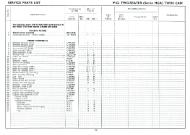
Couple new tech pages posted today. First was Issue 1 of the Service Parts List for MGA Twin Cam, which was originally published as an addendum to the MG Series MGA SPL (later split out as a separate book). Second was a copy of the FIA homologation document for the MGA 1600 model, issued in September 1959.
Tuesday May 5, 2020:
Strange BBS discussion over the past two days, revealing a 15 year old error on one of my tech pages. It was a mix up of early and older issue part numbers (two different styles) for rear axle hub extensions on MGA Twin Cam cars. This began with posting of Version 1 of the Twin Cam Service Parts List on Monday, where V2 was posted in 2009, and V3 was posted in 2016. V1 was originally published as an addendum to the MGA 1500 SPL in June 1958, reprinted in December 1958, showing the new Twin Cam specific parts, but with text only, no illustrations (above left).
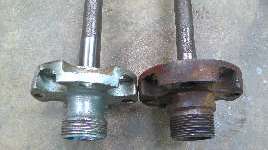
 Turns out there are lots of errors in the Twin Cam SPLs, mostly typing errors, but the V3 issue has the part numbers switched for early and late rear hub extensions. This wasn't only my web page, but a factory issue error that has been reprinted and re-posted around the world for 62 years. The research was kind of a pain, but good to have this finally sorted out and corrected. For sure this only works due to world wide cooperation and ease of communication on the internet. Turns out there are lots of errors in the Twin Cam SPLs, mostly typing errors, but the V3 issue has the part numbers switched for early and late rear hub extensions. This wasn't only my web page, but a factory issue error that has been reprinted and re-posted around the world for 62 years. The research was kind of a pain, but good to have this finally sorted out and corrected. For sure this only works due to world wide cooperation and ease of communication on the internet.
 Oh, by the way, today is (was) the sixth anniversary of the beginning of our current road trip on May 5, 2014. Anyone remember way back then? Under current conditions, this event has passeed quietly with no fanfare whatsoever, not even a club meeting or dinner at a restaurant. Better luck net year? Oh, by the way, today is (was) the sixth anniversary of the beginning of our current road trip on May 5, 2014. Anyone remember way back then? Under current conditions, this event has passeed quietly with no fanfare whatsoever, not even a club meeting or dinner at a restaurant. Better luck net year?
Wednesday May 6, 2020:

Something to kill time, responding to enquiry on chasing down the engine number for a 1960 International Harvester Metro Mite, which used a BMC/Austin B-series 1500 engine (which qualifies is as a variant of MGA).
Thursday May 7, 2020:
 Another small diversion today, documenting incorrect styling of a reservoir cap for MGA Twin Cam brake master cylinder. The part may have been OEM for some other application, or more likely just simplified for easier reproduction. A friend in Australia spent a day making rudimentary tooling to modify the part to make it look more original.
Another small diversion today, documenting incorrect styling of a reservoir cap for MGA Twin Cam brake master cylinder. The part may have been OEM for some other application, or more likely just simplified for easier reproduction. A friend in Australia spent a day making rudimentary tooling to modify the part to make it look more original.
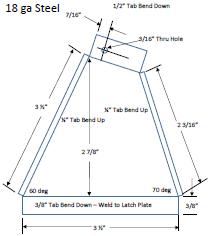
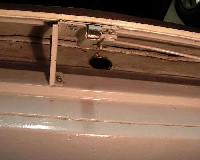
Friday May 8, 2020:
Another new tech page for something fairly simple, a drawing of the sheet metal brace bracket for the boot latch, so someone can make their own part.

Saturday May 9, 2020:
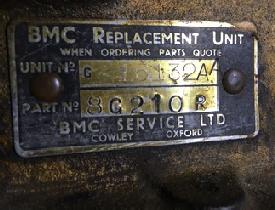
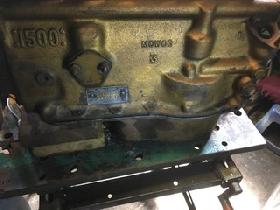 A minor web page update today when someone sent pictures of a very early production MGA Gold Seal replacement engine. Notice the part number begins with "8G' where later issues begin with "48G". And the number plate is located low on left side of the engine (a little strange).
A minor web page update today when someone sent pictures of a very early production MGA Gold Seal replacement engine. Notice the part number begins with "8G' where later issues begin with "48G". And the number plate is located low on left side of the engine (a little strange).
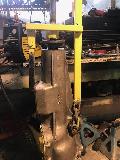
Sunday May 10, 2020:
Slow day, but did post up a new page for a special tool for pulling the rear housing off of an MGA 1600 type (or MGB) gearbox.
Monday May 11, 2020:
Time for a new tech page on changes to front spring pans and wishbone arms to accommodate introduction of the front anti-sway bar for MGA. This came from a question of being able to modify early issue parts to serve as later issue parts (not easy to do).
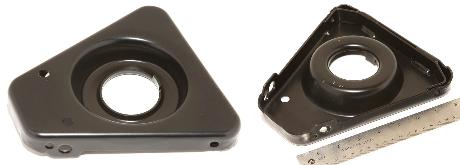
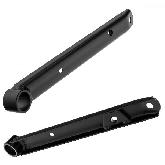

Tuesday May 12, 2020:
Twin Cam enthusiasts have been reviewing a drawing of a Twin Cam piston with 9.9:1 compression ratio that has been around since 2010. This one is apparently depicting a piston that was previously made for aftermarket. The drawing is not quite complete, but it does show an error of 52-degree valve relief angle on top where it should be 50 degrees. And there are some pistons that do exist with this erroneous angle on top. So I was just updating the web page with notes to suit, and we hope to have a better drawing sometime soon.
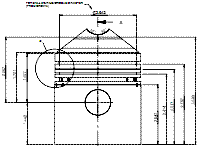
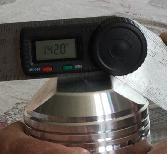
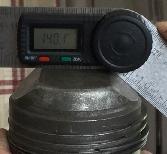
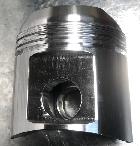
 Erroneous Drawing Detail Erroneous Drawing Detail
 Erroneous Part Erroneous Part
 Correct Original Part Correct Original Part
 Low Compression Piston Low Compression Piston
Then I spent a few hours adding 80 CSM (Confidential Service Memorandum) to my MG Tech expanded index. These publications were previously on my web site, just not listed with links in the expanded tech index.
Wednesday May 13, 2020:
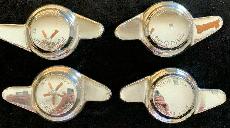
Added a tech page on repair and rechroming of knock-off nuts for wire wheels.
Some BBS discussion about interchangeabilty of MGB rear axle parts into the MGA.
Thursday May 14, 2020:
Something more entertaining to kill the boredom today. Took a short evening tip to visit Marc Chapman in Westerville, OH. I was here last July for a look at his MGA 1600-MK-II project car. There was a lot of body work going on at the time, but now more mechanical work on the chassis. Today we would be working mostly on the rear axle, which had already been cleaned up quite a bit. One note before proceeding, he has two rear axles, one for his MK-II MGA, and one from an early production MGB.
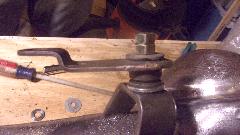
We had a bear of a time removing the equalizer stud from the bracket, because the stud had stripped threads inside the bracket, and we couldn't get it to unscrew. We ended up using a Sawzall to cut the stud off near flush inside the bracket, then double nutting the stud and unscrewing it while prying underneath the large washer with a pair of stout screw drivers. That did it, and the thread in the bracket is in good condition.
Removing the slave cylinder requires first removing the brake line banjo from the back side, then removing the extending end cap before sliding the cylinder out of the slot in the back plate. Both slave cylinders were severely corroded inside so the pistons would not slide out, and the end caps were "butchered" in the process. The cylinders would need to be replaced anyway, so toss those into the dust bin.
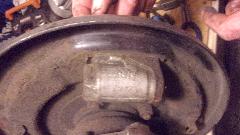
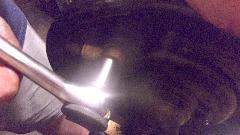
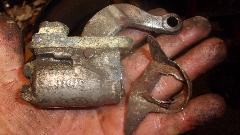
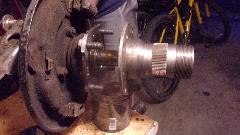 Pulling the halfshafts was easy peasey, just drain oil from the differential first, then one Phillips drive screw to free the splined hub, and catch the dribble from the bearing hub when it comes apart.
Pulling the halfshafts was easy peasey, just drain oil from the differential first, then one Phillips drive screw to free the splined hub, and catch the dribble from the bearing hub when it comes apart.
 Then we got to play with a few big boy toys hauled out of the magic trailer. Knock down the lock tab before unscrewing the large octagonal bearing retaining nut. The first nut required lots of torque to loosen, while the second one came loose with minimal torque. After removing the lock tab washers, the first hub required vigorous application of the 5-pound slide hammer, while the second one came off easily with the first pull. Then we got to play with a few big boy toys hauled out of the magic trailer. Knock down the lock tab before unscrewing the large octagonal bearing retaining nut. The first nut required lots of torque to loosen, while the second one came loose with minimal torque. After removing the lock tab washers, the first hub required vigorous application of the 5-pound slide hammer, while the second one came off easily with the first pull.
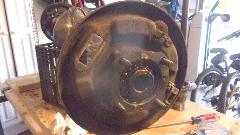
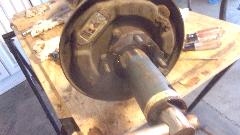
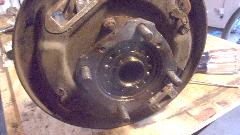
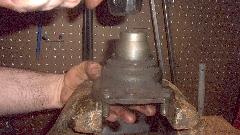 Somewhere in here we had a short break for a light dinner, and making friends with the house dog before getting back to work. Then take the bearing hubs to the big vice to drive out the wheel bearings (gently) with a 3-pound hammer and large wrench socket, after which a large screw driver and 1-pound hammer can remove the bearing seal. Brake backing plates were easily removed with just four bolts each, and the hubs, backing plates and axle housing are now free for cleaning and painting.
Somewhere in here we had a short break for a light dinner, and making friends with the house dog before getting back to work. Then take the bearing hubs to the big vice to drive out the wheel bearings (gently) with a 3-pound hammer and large wrench socket, after which a large screw driver and 1-pound hammer can remove the bearing seal. Brake backing plates were easily removed with just four bolts each, and the hubs, backing plates and axle housing are now free for cleaning and painting.
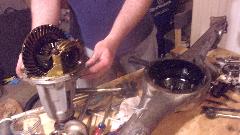 It was getting late, but we were enthused enough to remove ten nuts and washers to knock the differential assembly loose and pull it out of the axle housing for inspection. Thrust washers for differential gears were in very good condition with minimal backlash in the gears, so nothing needed there. Gear tooth backlash in the bull gear seemed acceptably small, so probably nothing needed there either (but will measure it again later). There was a very small but detectable bit of looseness in the pinion shaft bearings (very common due so slight bearing wear) where these bearings should be slightly preloaded, so we are making planes to adjust bearing shims while replacing the rubber seal on the input flange. But keep that for another day as we put the big boy tools away and call it a night.
It was getting late, but we were enthused enough to remove ten nuts and washers to knock the differential assembly loose and pull it out of the axle housing for inspection. Thrust washers for differential gears were in very good condition with minimal backlash in the gears, so nothing needed there. Gear tooth backlash in the bull gear seemed acceptably small, so probably nothing needed there either (but will measure it again later). There was a very small but detectable bit of looseness in the pinion shaft bearings (very common due so slight bearing wear) where these bearings should be slightly preloaded, so we are making planes to adjust bearing shims while replacing the rubber seal on the input flange. But keep that for another day as we put the big boy tools away and call it a night.
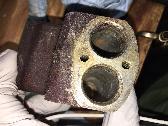
Friday May 15, 2020:
Not a lot happening, but did get involved in an extended discussion on an MGA with 20-year old hydraulic system that had sat unused for the past 9-years, leaked dry with badly corroded master cylinder. Prospects are that it needs a complete hydraulics rebuld, again. Should teach you to drive the cars, not let them sit for a long time.
|